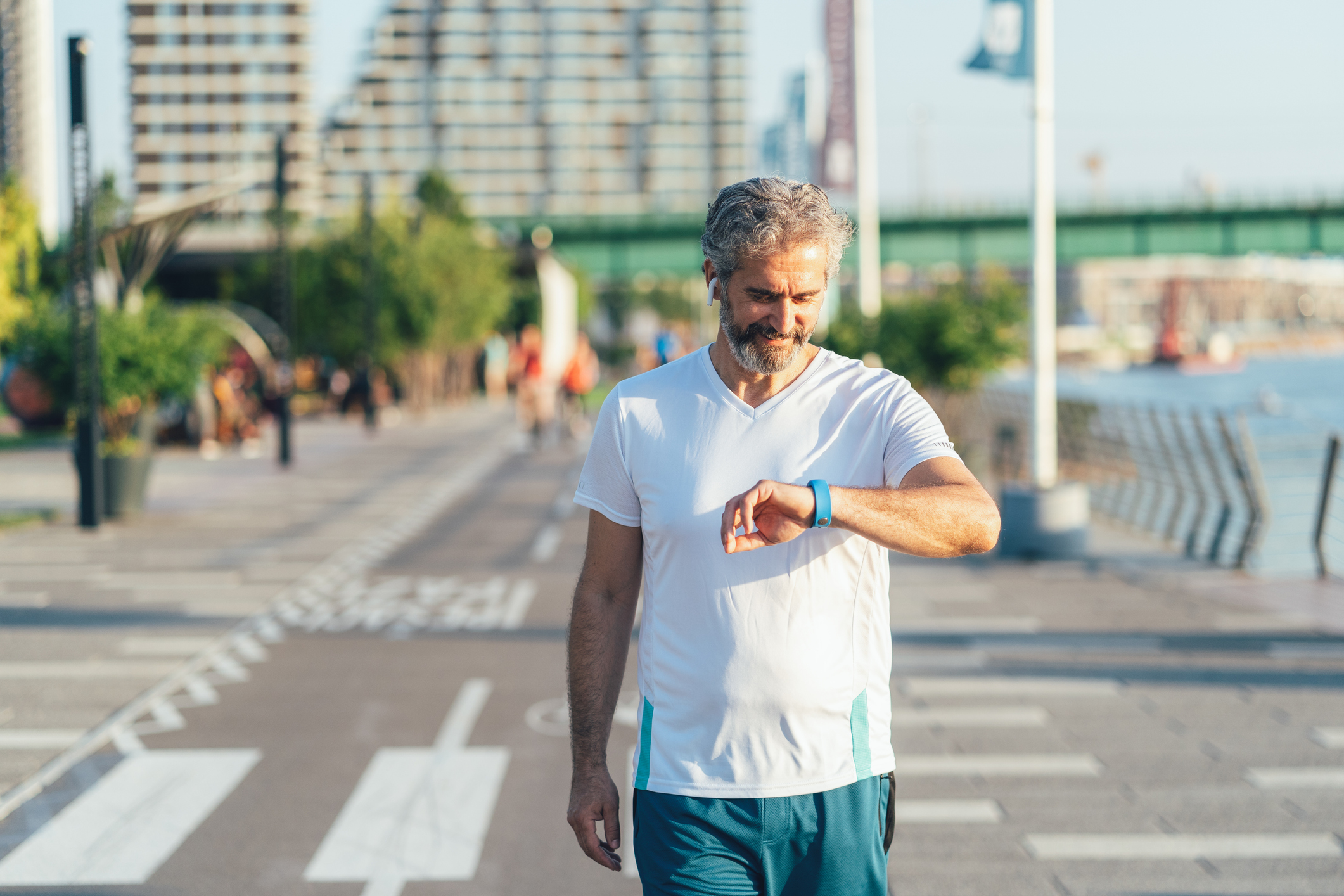A personal trainer and running coach says this 30-minute walking workout is one of the simplest ways to get healthier
Got 30 minutes to spare? Try this walking workout

A lunchtime workout sounds like a great idea, until you realize that it’s nearly impossible to warm up, exercise, cool down, then shower, and still have time to eat your food.
But it doesn’t have to be this complicated.
Certified trainer and We Run coach Amanda Grimm says you can easily do a 30-minute walking workout on your break, without needing to change your clothes.
“People think they need to allow over an hour [to exercise] and that puts them off before they even start,” she says.
“But all you need is a quick 30-minute walk during your lunch break, and this is enough to help your fitness, support weight loss, and strengthen your bones and muscles.”
All these benefits are cumulative, which means you’ll need to do regular walking workouts to see changes—but you’ll probably feel better right after your first 30-minute stroll.
“If you can, try getting out for a walk on most days, as just walking four or five times a week is plenty to feel a change,” says Grimm.
Start your week with achievable workout ideas, health tips and wellbeing advice in your inbox.
“After a while, it just slips into your routine and stops feeling like a workout.”
How to do the 30-minute walking workout

1. Slow walk
Time: 5min
Start with a slow, easy walk to warm up and loosen your muscles and joints.
2. Moderate pace
Time: 5min
Spend five minutes picking up the pace. Ensure your body is still relaxed; you can still hold a conversation, but you are walking faster than a stroll.
3. Fast pace
Time: 2-3min
Drive your arms forward and back to increase your speed to the fastest pace you can walk, without turning into a run. This will only be for two to three minutes, but it should raise your pulse.
4. Slow pace
Time: 5min
Give yourself a bit of a rest, slow down, and walk at a comfortable pace to regulate your breathing.
5. Moderate pace
Time: 3-5min
With your shoulders back and core engaged, take long, brisk strides for three to five minutes.
6. Fast pace
Time: 3-5min
This is an opportunity to challenge yourself and reap increased benefits from the walk. Without running, increase your speed to a fast but controlled walk for three to five minutes. Imagine you’re going to be cutting it very fine for an appointment, and need to get there as quickly as you can without breaking into a jog!
7. Cool down
Time: 5min
Slow your pace until your heart rate returns to normal, then spend five minutes stretching to prevent stiffness and injury. Stretch your calves, hamstrings, lower back, waist and hips to release tension.
Beginner tips

Wear the right shoes
“Although you aren’t going running, footwear is still important,” says Grimm.
“Make sure your shoes are a good fit, comfortable and supportive. Also, ensure they are suitable for the weather and ground, with adequate grip and waterproofing if trail walking.”
You can find my tried-and-tested picks in my best walking shoes guide.
Take a water bottle
“You may not be doing high-intensity exercise, but it’s still essential to drink water before your walk. Take sips during and then replenish after,” advises Grimm.
Check your pace
If you’re not sure how fast you should be going, you can use the NASM perceived rate of exertion scale as a guide.

Lou Mudge is a Health Writer at Future Plc, working across Fit&Well and Coach. She previously worked for Live Science, and regularly writes for Space.com and Pet's Radar. Based in Bath, UK, she has a passion for food, nutrition and health and is eager to demystify diet culture in order to make health and fitness accessible to everybody.
Multiple diagnoses in her early twenties sparked an interest in the gut-brain axis and the impact that diet and exercise can have on both physical and mental health. She was put on the FODMAP elimination diet during this time and learned to adapt recipes to fit these parameters, while retaining core flavors and textures, and now enjoys cooking for gut health.
You must confirm your public display name before commenting
Please logout and then login again, you will then be prompted to enter your display name.
